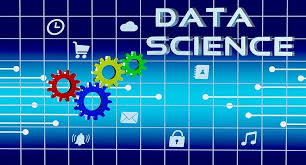Source: bweducation.businessworld.in
We have been stumped by Nature, with a pandemic the likes of which have not been witnessed since the Spanish flu. That, however, was about a hundred years ago; today we are living in a digital world with technology that can help us in ways that must have been unimaginable to our predecessors.
There are major lessons to be learnt and the faster we pull our act together, the better we will recover and safeguard ourselves from the ongoing catastrophe that has the potential to snowball into something even bigger.
Health Monitoring
Some governments have taken certain ‘debatable’ measures which seem to be working for them. The Chinese have started to track many of their citizens as well as visitors through an app-based software which not only preserves their personal health-related data and whereabouts but also generates a red, yellow or green QR code that may be verified at various checkpoints. These colour codes correspond to the risk level of COVID-19. Besides, the app also issues directives for those at risk or requiring isolation.
The Nightingale Project from White Swan, a non-profit initiative in the UK, has come up with another app which analyses millions of public data points and conversations related to ailments and makes an attempt to link them with symptoms of COVID-19. Utilising data from wearable gadgets, the app is able to better analyze individual cases.
Various countries in Europe have jointly come out with PEPP-PT, an app for contact tracing. Technology giants Google and Apple have been working on a contact tracing app in the USA, which will purportedly provide a tracing functionality through the operating system, with the possibility of sending an alert if the user has come in close proximity with a known COVID-19 infected person.
On the domestic front, India’s Aarogya Setu app is gaining much popularity.
Data Analysis Tools – Forecasting, Modelling Tools
Data Science experts are working dedicatedly in partnership with medical practitioners, at institutions like Oxford University and Johns Hopkins, where mathematical models are being researched to analyse trends and pinpoint sensitive areas and potential hot-spots. The US Centers of Disease Control has placed some of its best researchers at the machine learning centre of Carnegie Mellon University to help analyse trends and make forecasts.
Although Artificial Intelligence is being utilised for drug discovery, much more data is needed to come up with credible results. According to Neil Cheng, Senior Data Scientist at Akamai, only the sickest are being diagnosed. The data, therefore, touch upon only a fraction of the population at large.
This is why extensive testing is important. It is no rocket science; the more data we have, the better we can monitor, analyze and take corrective measures.
Data Privacy Vs Tracking Life-Threatening Diseases
It has been repeatedly stressed by various agencies the world over that a greater drive to test citizens is key to getting a grip over the disease. On the one hand, individuals play a key role in terms of cooperating with health professionals and sharing data, whereas on the other, authorised government agencies have to develop a mechanism to not only collect this data but also to safeguard it. With wearable devices like Fitbit, pressure-sensitive footwear, and thermal monitors it is very much possible to capture data. Perhaps insurance agencies and government-funded schemes should be introduced to provide the needed infrastructure and devices to monitor at least the most vulnerable in our society.
The wristband linked to the Aarogya Setu app will be able to monitor the movement of the wearer and even where they eat. In certain ways, this can come across as daunting and as an invasion of privacy; however, the government has time and again reassured us of the safety of the data.
It is clear that data scientists need to play a greater role in the ongoing crisis to help make higher-level decisions by analysing confirmed cases, fatalities and recoveries. Monitoring the curve has provided much-needed insights for deploying life-saving equipment and health professionals well ahead of time in various countries.
With a humongous population and umpteen dense pockets, India will have to look at healthcare very innovatively. Investment in the right kind of programmes, incorporating technology in a planned manner to support Data Science, is undoubtedly the way forward. We need to look not just at the current situation but also plan for years to come, lest Nature catches us unawares yet again before another hundred years pass.
